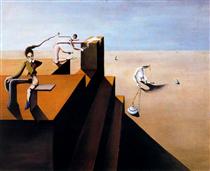
1913 - 1976
Esteban Francés

description
A Spanish artist and theater designer, a bright representative of Surrealism. Esteban Frances spent his youth in Barcelona; with the outbreak of World War II, he moved to Argentina and became one of the first Surrealists in South America. In the United States, the artist joined a group of European surrealists headed by Andre Breton. The Spanish painter closely communicated with Max Ernst, Yves Tanguy and Salvador Dali, but was in a special relationship with the Catalan artist Remedios Varo, who was his lover and faithful friend.
In his surrealistic works, the artist used automatism, which allowed him to reproduce spontaneous thoughts, memories and fantasies on the canvas without the influence of reason and logic. Frances often used the technique of scratchboard, scratching a drawing on a pre-coated surface, which created unusual and unpredictable effects. The paintings of the Spanish artist are distinguished by brightness, texture and originality of images that seem to arise from strange dreams and intricate memories.
The contemporaries of Esteban Frances knew him as an author of the scenography for the productions of American ballet. The artist’s collaboration with Russian choreographer George Balanchin lasted twenty years, during which Estaban not only created thousands of bright theatrical images but also developed a completely new approach to the traditional art of ballet design.
Key ideas:
– The artist’s paintings, created with the help of the canonical for “surrealism” automatic painting, look like fantastic universes inhabited by strange and incomprehensible creatures. Biomorphic designs and fancy colour spots fill almost the entire surface of the canvas.
– The artist was always interested in natural phenomena, especially such indomitable elements as a hurricane, a storm and a fire. During his stay in Mexico, E. Frances witnessed the eruption of one of the volcanoes: red-hot lava flows, slowly flowing and endlessly changing their shape, made an indelible impression on him. In the artist’s paintings, bright red surfaces with a smooth texture resembling lava appeared.
– Frances often depicted various animals. His most favourite characters were bulls, crows, roosts and horses, usually strangely deformed, aggressive, with sharp claws, horns and beaks.
– The atmosphere of surreal paintings by Esteban Frances is characterized by tension, dynamics and a high-energy message. The characters of his paintings are in constant motion, which, like a whirlwind or a hurricane, moves them in a circle and stretches their real forms. Vivid colours, especially purple-red, which the artist was very fond of, give his works an even greater tension.
– By the end of his creative career, Francis cardinally changed his painting style, developed over the years. His paintings received clearer and smoother lines, real human figures appeared in them, and fantastic images gave way to more mundane ones. The aesthetics of these late works is close to the style of modern, while the plots are filled with allegories and riddles and cause ambiguous interpretations.
1913
1932
1937
1939
1942
1945
1946
1958
1972
1976
The artist was born
Met Remedios Varo

He moved to Paris

Immigrated to Argentina
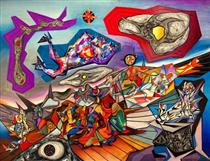
He moved to Mexico
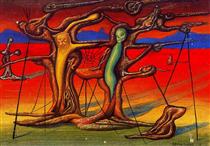
Married Irene Ballesteros

Frances decided to stay in New York
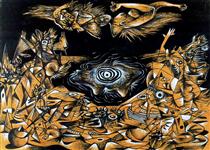
Francis decided to return to his homeland
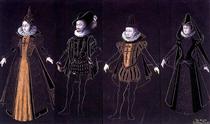
Returned to painting
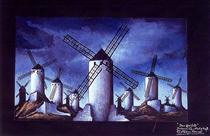
The artist died
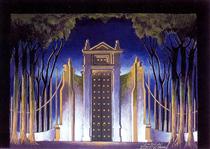
Esteban Francés
On Artist
flow
Surrealism
Dada
Cubism
Futurism
Modern
Abstract art
friends
Max Ernst
Oscar Dominguez
Yves Tanguy
Paul Eluard
artists
Giorgio de Chirico
Salvador Dali
Andre Breton
Victor Browner
Roberto Matta
Gordon Onslow Ford
By Artist
flow
Abstract expressionism
friends
Remedios Varo
artists
Leonora Carrington
